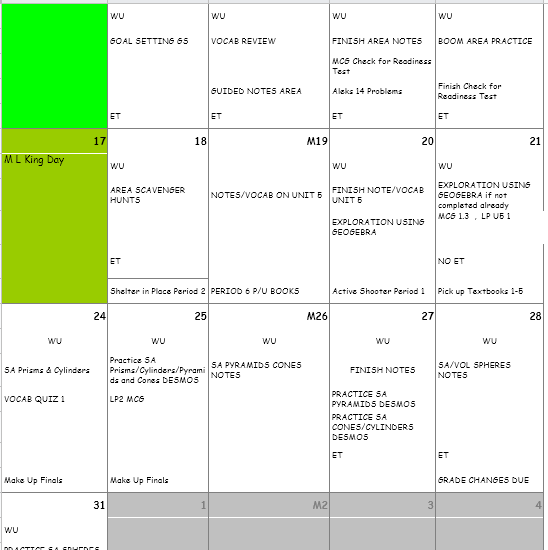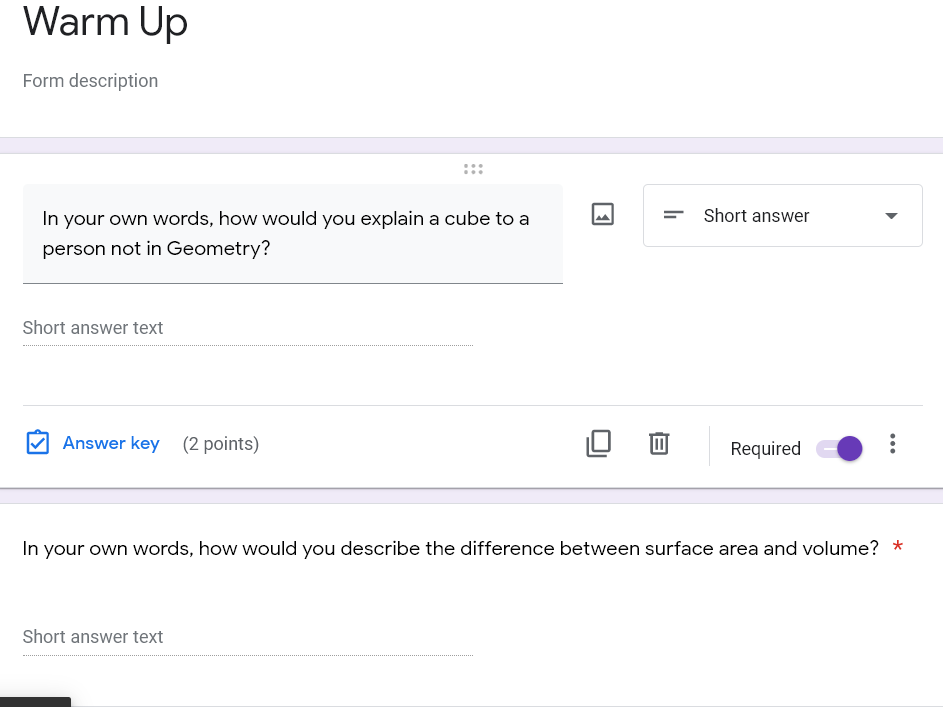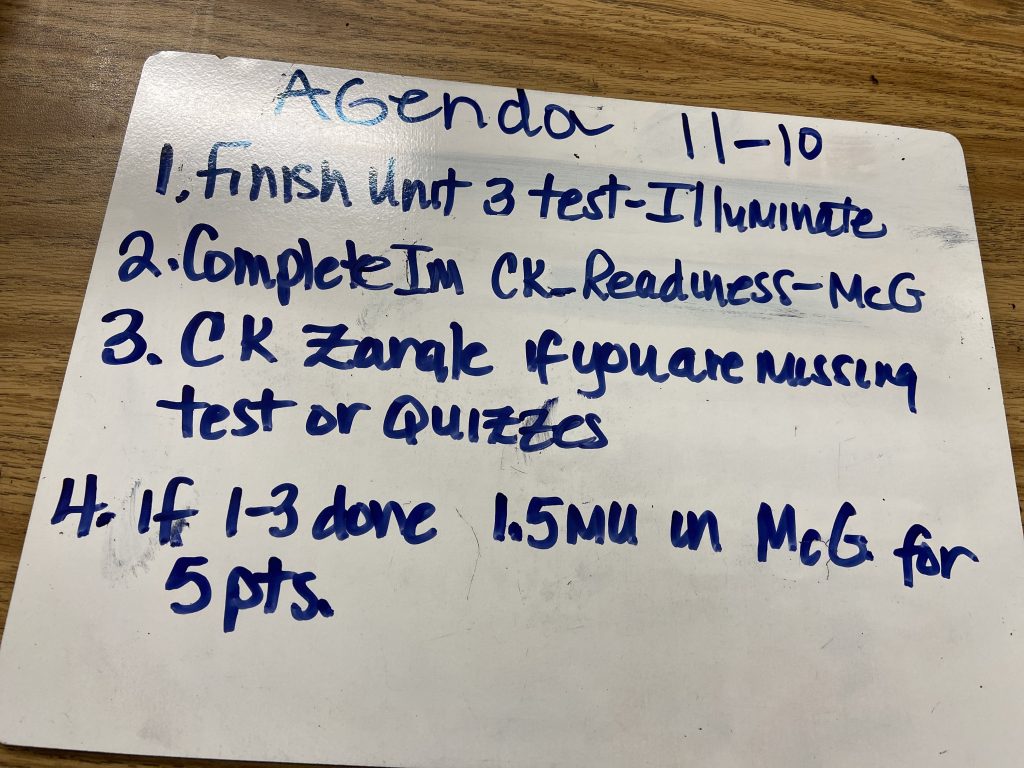I love planning of all types but especially lesson planning. I hate to say it because many people hate this part of teaching. But even if this is not your strength, you can still master lesson planning. It takes some organizational tools and a few minutes at the end of each week to plan for the next week.

Distance learning has taught teachers a lot about creating materials for students who can access later in case of absences or just for review. This school year, while we are in person, has been disrupted because of the number of students who miss class due to quarantine or Covid Symptoms.

Lesson Planning Master Calendar
I have a master calendar. These usually change often. The district provides a pacing guide for each unit in the content. Those individual lessons in each unit are mapped out on a master calendar so that quizzes and tests can be planned in advance. Then the individual lessons are planned in detail.
Tip 1: I plan in an excel sheet, but google sheet works fine as well. You can download a free calendar in excel here. Then upload to google if that works for you. I share this with students–yes, it is updated almost daily because life happens and things change. But if a student is absent, they know exactly what they missed (and so do I).

Tip 2: Unless you have lesson police, some lessons can be combined or taught in a different order to help students.
Tip 3: It is important to assess student skills before each unit so foundational skills can be reviewed. In many curriculums, students are given a readiness check before the unit begins but this is often not comprehensive. And if a unit lasts several weeks, students may have forgotten any review before the unit.
In a recent lesson on Pythagorean Theorem, I had to review what it means to square a number and take a square root. I also had to show students how to calculate this on a calculator. If I had not done this, they could not be successful on finding a missing side.

Lesson Planning To Do List
Using a master to do list helps keep track of the lesson components. Even if you have a lesson plan from a book, the small components of the lesson have to be completed. I keep track of this on the side of my calendar in excel and shade in the line when it is completed.
I need a warm up (also called bell ringer), some type of notes/ vocabulary/ activity and a closing activity which is usually and exit ticket.
If there are 5 minutes in a day when I am caught up, I use the time to make an exit ticket or warm up, often using google forms.
Tip 4: I use templates to speed the process. If you use google forms, having the Warm Up or Exit Ticket format will speed completion. The template has a space for a last name, first name and period as well as the settings so each time it is used, it saves time.


It is easier and less time consuming to do all like tasks at the same time. Rather than completing one task or one day, doing similar tasks gets you finished faster.
Tip 5: Whenever possible, batch tasks. On the master To Do List, I need 5 warm ups and 5 exit tickets each week on average. It is more efficient to create all the warm ups at once.
If you are using printed warm up’s , try using a weekly paper so students put them on the same page. A student volunteer stamps the paper each day and at the end of the week the paper is turned in.

Lesson Agenda
Each class begins with the lesson agenda. After the first few days of school, students understand they need to check the agenda for supplies/papers/getting started activities. It can be written on the board, displayed using the projector or included on the lesson slides which are projected.

Tip 6: An agenda comes in handy when students are absent. The agenda can be given to students so they know what needs to be completed for the missing day. Use a template for this as well.
Tip 7: Use Google Classroom or other online format to post an agenda and/or calendar.
Tip 8: Students often ask if they can use their phone and take a picture of the agenda. If this is what it takes to keep them on task, remembering what is assigned each day, then this works.
An agenda also proves useful when a student or parent claims later they did not know something was assigned that day.

Lesson Components
The meat of the lesson and the activities vary depending on the content. When the lesson included geometric constructions, students used Geogebra. Links were provided within lesson slides and were shared with students.
The trigonometry lesson included hands on activities of identifying sides, writing ratios with a partner and simplifying ratios in boom cards.
Individual components of activities to be used will need to be listed on that to do list so there is no last minute confusion.
Tip 9: Provide lesson slides to students when possible.
Whenever I mentor new teachers, it is always fun to see organizational ideas that others use. First year teachers especially need these organizational tips so they can save time. I hope you have found these tips useful. If you have questions, leave a comment or email me at [email protected]










Leave a Reply